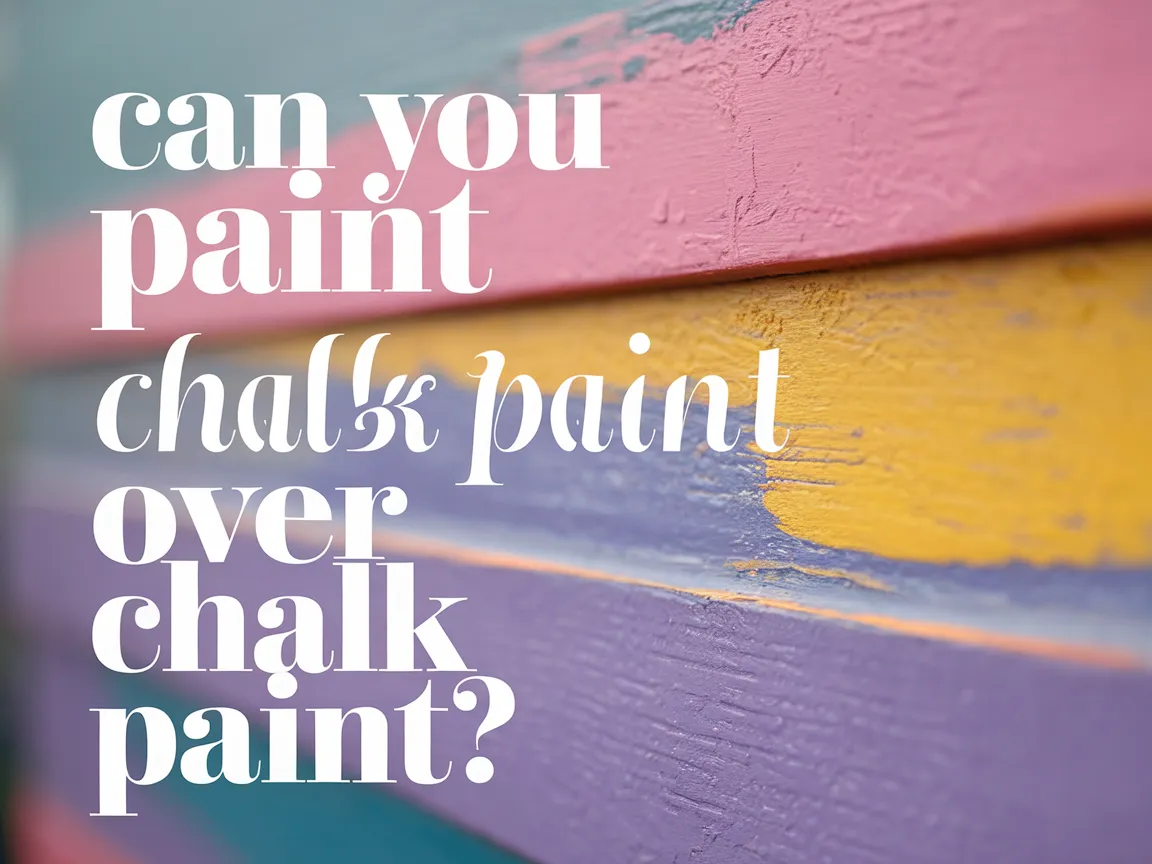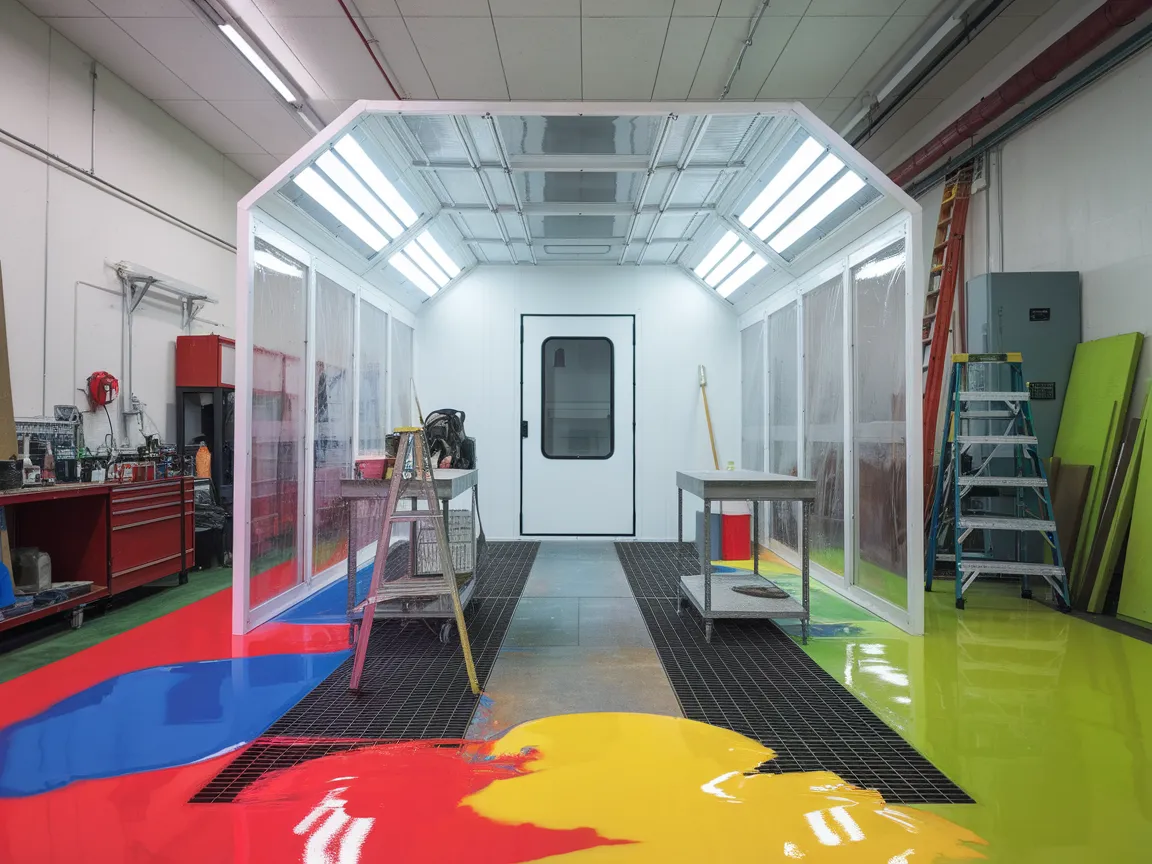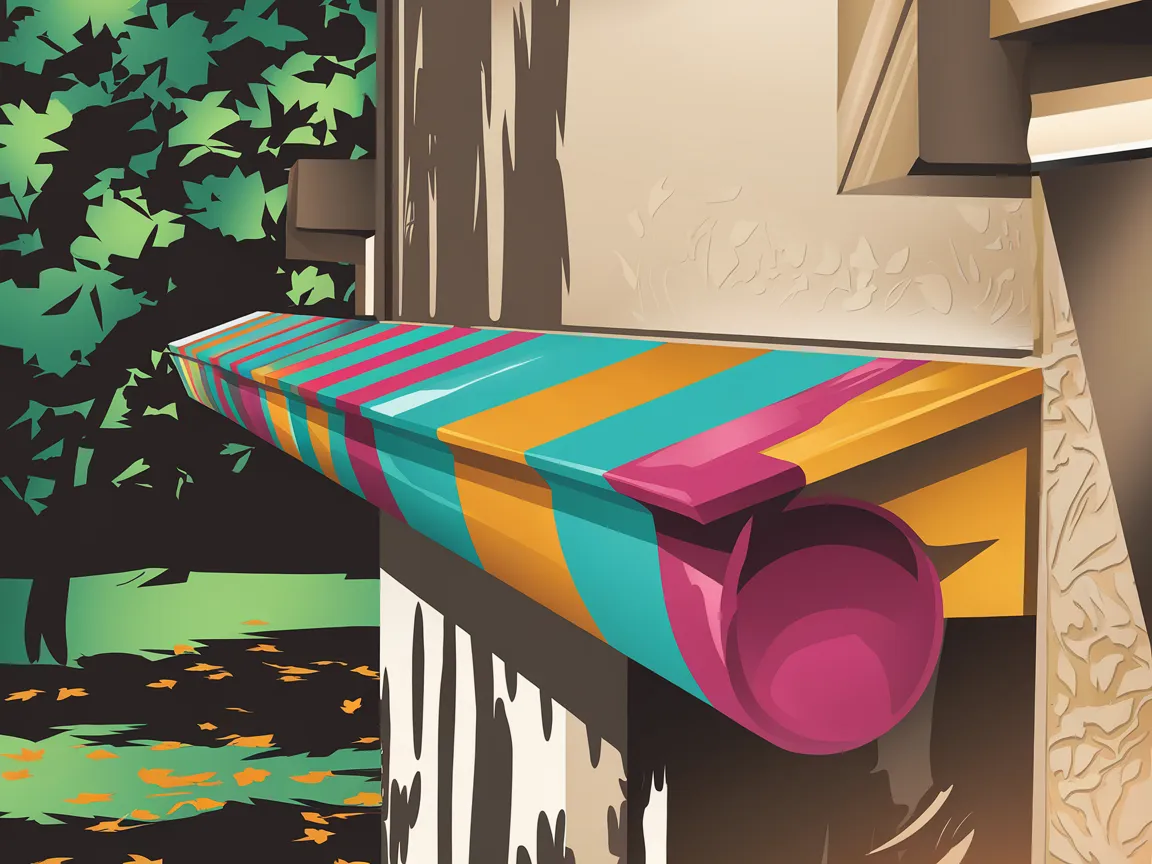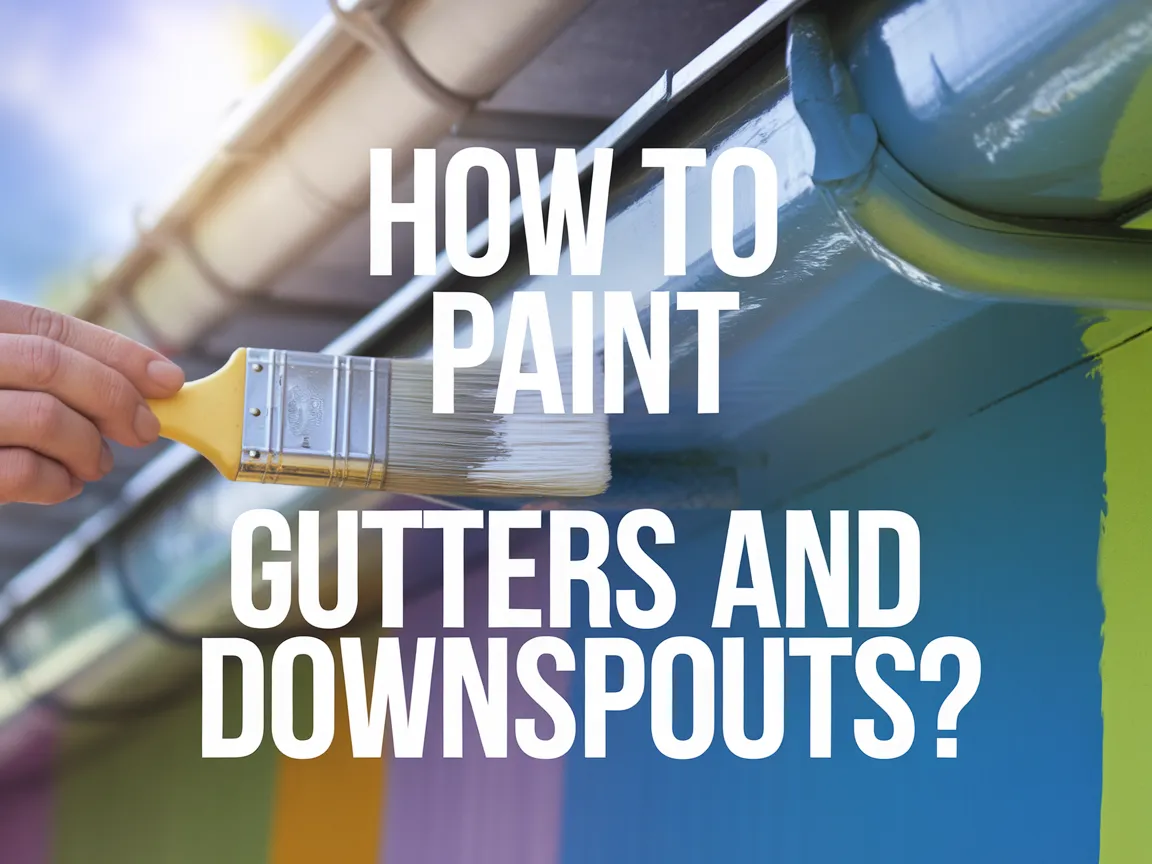What Color to Paint Baseboards?
Published on: April 27, 2025 | Last Updated: January 7, 2025
Written By: Alisha Winters
Baseboards are the wooden strips at the bottom of your walls. They help hide gaps and protect walls from scuffs and dirt.
So, what color to paint baseboards? It’s important because it can change the vibe of your whole room. I’ve painted mine a few times, and trust me, the right color makes a big difference!
In this article, we’ll explore the meaning of baseboards, essential tips before painting, steps for a smooth job, color recommendations, types of colors and their effects, factors to consider, common issues, finishing touches, and DIY project ideas for baseboard painting. This will help you decide what paint for baseboards fits your style.
Contents
- 1 What Color to Paint Baseboards?
- 2 What Are Baseboards?
- 3 Essential Considerations Before You Start Painting Your Baseboards
- 4 Steps to Successfully Paint Your Baseboards
- 5 Recommended Color Palette for Baseboards
- 6 Trendy Colors for Modern Baseboards
- 7 Choosing the Right Finish for Baseboards
- 8 Factors Affecting Your Color Choice for Baseboards
- 9 Psychology of Color Choices for Baseboards
- 10 Color Combinations for Baseboards and Walls
- 11 Common Issues When Choosing a Color for Baseboards
- 12 Finishing Touches for a Perfect Baseboard Paint Job
- 13 Frequently Asked Questions About Painting Baseboards
- 14 Conclusion
- 15 Useful Resources
What Color to Paint Baseboards?
For baseboards, white or off-white is a classic choice, as it brightens spaces and matches many wall colors. You can also use a bold color to create contrast. Remember, semi-gloss paint works best for durability and easy cleaning. If you’re curious about specialized paint finishes, ceramic coating matte surfaces offers unique protection. It’s all about your style!
The Finishing Touch
A freshly painted wall is a blank canvas. The best way to bring your room to life is with a single piece of statement art that ties everything together.
Browse Wall Art at Big Wall DecorWhat Are Baseboards?
Baseboards are the trim at the bottom of interior walls. They’re usually 3 to 5 inches (7.6 To 12.7 Cm) high and made from materials like wood, MDF, or PVC.
Choosing the right color for baseboards can enhance a space. I picked bright white for my living room, and it made a huge difference!
I used color to create contrast in my home. Light colors can make a room feel larger, while dark colors add warmth and depth. It definitely affects the overall atmosphere.
Essential Considerations Before You Start Painting Your Baseboards
What do you need to paint your baseboards?
- Quality Paint: Use high-quality paint like Behr Premium Semi-Gloss or Sherwin-Williams ProClassic for durability and a smooth finish.
- Paint Brushes: Get angular brushes such as Wooster Shortcut 2-inch (5.08 Cm) or Purdy Edge Brushes to navigate corners and edges easily.
- Painter’s Tape: Use 3M Blue Painter’s Tape to protect your walls. It’s essential for clean lines and preventing paint bleed.
- Drop Cloth: Use a large drop cloth (3 M X 2 M / 10 Ft X 6.5 Ft) to catch any drips, keeping your floors safe from paint spills.
We have now covered important factors to consider before starting to paint your baseboards. Next, we will outline the painting steps.
Also See: Can HOA Make You Paint Your House? Know the Rules!
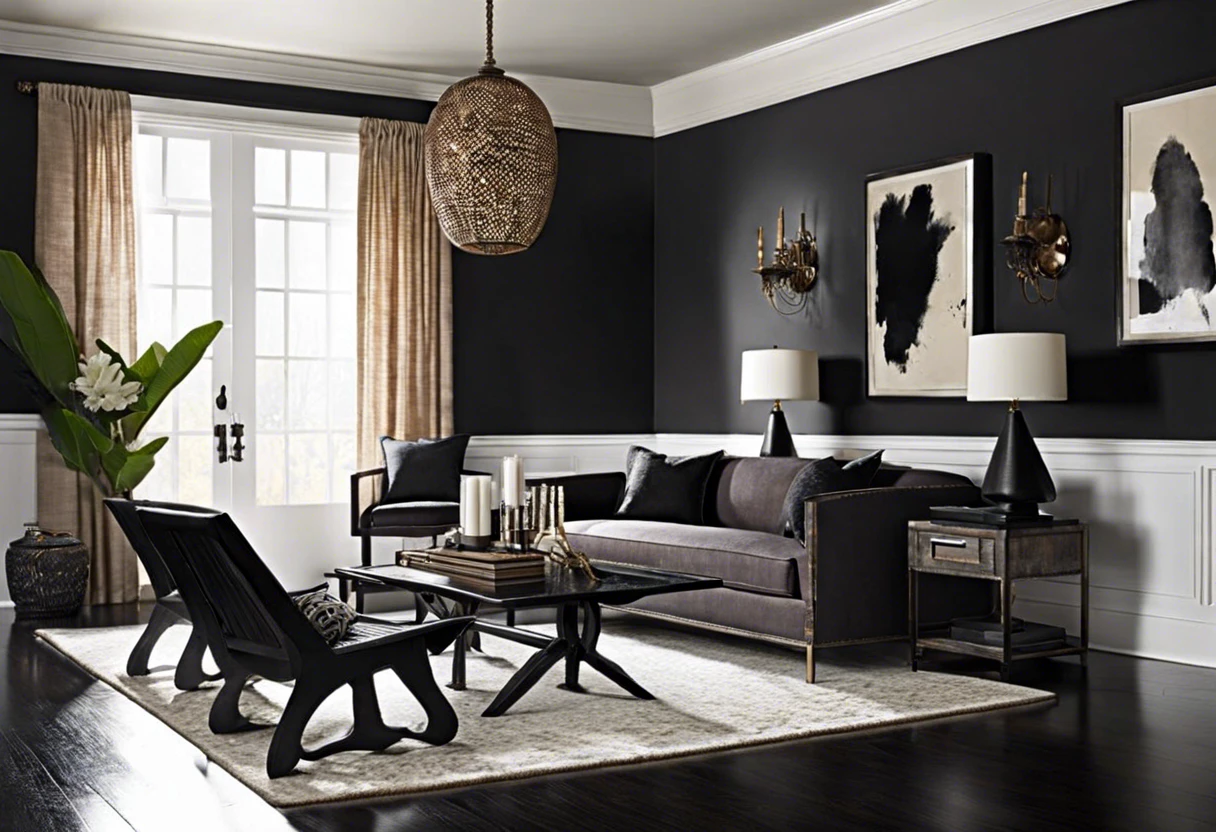
Steps to Successfully Paint Your Baseboards
Here are the steps to choose the right color for your baseboards.
-
Preparation Of the Area
Start by removing furniture and covering the floor with drop cloths. This prevents paint splatters and protects the surface beneath, making cleanup easier.
Clean the baseboards with a damp cloth to remove dust and dirt. A clean surface helps the paint adhere properly for a long-lasting finish.
-
Selecting the Right Paint
Choose high-quality paint designed for trim to ensure durability and easy cleaning. Satin or semi-gloss finishes work best for baseboards, providing a polished look and resisting wear better than matte paint. If you’re considering alternative painting methods, spray painting trim techniques can offer unique advantages for your home improvement project.
Decide on your baseboard color: white is classic, while bold colors add character. If you want warm or cool accents, test small patches on the wall before committing, as paint can look different under various lighting conditions. When exploring creative wall painting techniques, you might want to experiment with acrylic paint applications.
-
Priming the Baseboards
Apply a primer to improve paint adherence and brightness. Using a primer for stark contrasts, like a dark baseboard with a bright color, can prevent excessive coats.
Consider using a brush to reach into nooks and crannies. Priming also helps if you’re painting over a previously dark shade, making your final color appear more vibrant.
-
Painting Techniques
Use a brush for corners and edges to create clean lines. Then, roll the larger flat areas with a foam roller for uniformity and speed; this method reduces the chances of drips.
Apply thin, even coats to avoid sagging and ensure better drying. Use at least two thin layers instead of one thick coat for the best finish.
-
Allowing for Drying Time
Let your first coat dry completely. Most paints require about 1 to 6 hours, and humidity can extend drying times, so check your paint can for specifics.
After the final coat, wait at least 24 hours before replacing any furniture or exposing the baseboards to moisture. Patience pays off—your fresh paint job will look perfect and last longer.
We have now covered the process of effectively painting your baseboards. Next, we’ll explore suggested color options for baseboards.
The Finishing Touch
A freshly painted wall is a blank canvas. The best way to bring your room to life is with a single piece of statement art that ties everything together.
Browse Wall Art at Big Wall DecorRecommended Color Palette for Baseboards
I recommend the “Coastal Calm” palette for your baseboards because the colors create a fresh, serene vibe that’s relaxing yet stylish.
| Color Box | Hex Code | Color Name |
|---|---|---|
| #A3C1DA | Sky Blue | |
| #F7E7CE | Soft Cream | |
| #178B88 | Teal Depths | |
| #D7855B | Warm Sand |
We covered suggested color choices for baseboards here. We will now cover stylish colors for contemporary baseboards.
Trendy Colors for Modern Baseboards
Let’s explore some trendy colors that are gaining popularity for baseboards.
-
Charcoal Gray
This rich, dark color adds a touch of sophistication. It contrasts beautifully with lighter walls and gives your space a modern edge.
-
Soft Sage Green
This calming shade brings nature indoors. It complements earthy tones and creates a tranquil atmosphere in any room.
-
Blush Pink
A trendy, soft pink adds warmth and charm. It works well in bedrooms or nursery spaces, making them feel cozy and inviting.
-
Matte Black
This bold choice dramatically contrasts while providing a sleek, contemporary look. It’s perfect for modern or industrial-style homes.
We’ve wrapped up trendy shades for contemporary baseboards here. Let us turn our attention to selecting the appropriate finish for baseboards.
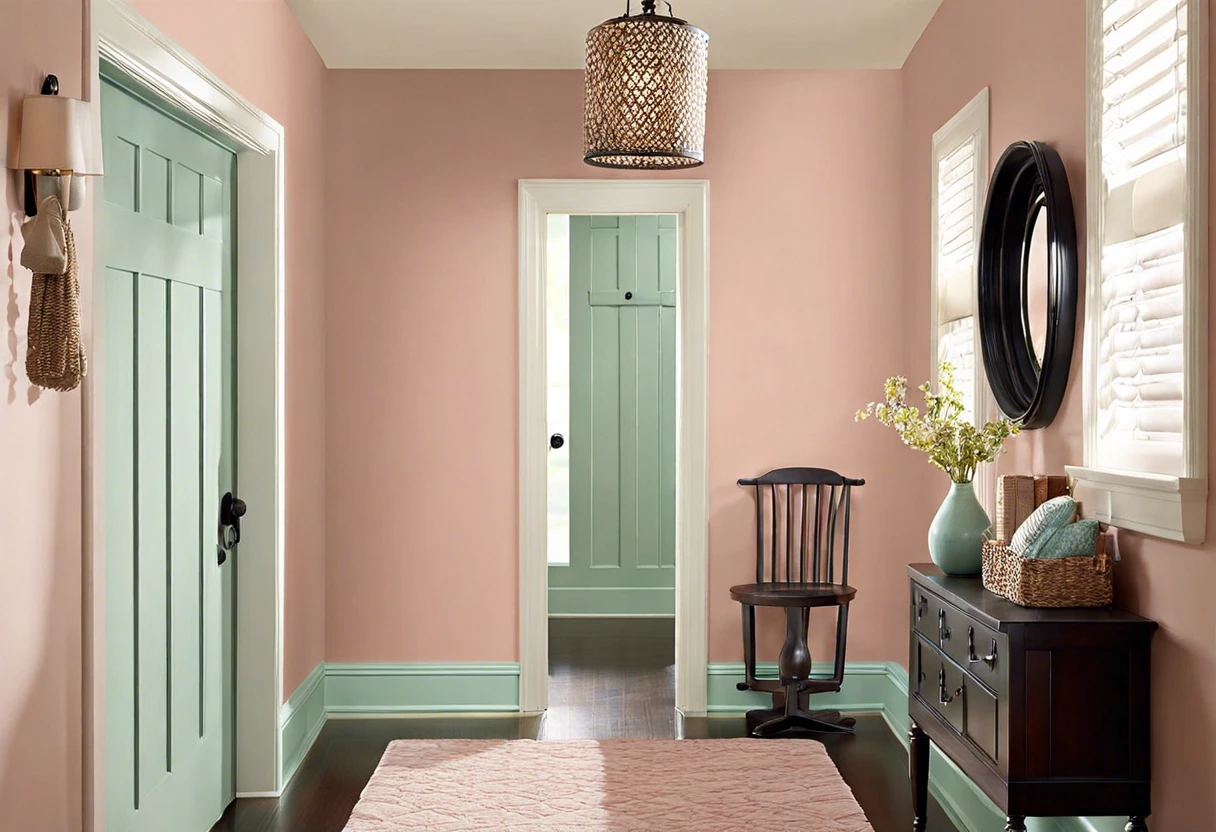
Choosing the Right Finish for Baseboards
Selecting the proper finish is just as important as picking a color for baseboards.
| Finish Type | Durability | Best Use | Example Colors |
|---|---|---|---|
| Semi-Gloss | High | High-traffic areas | Bright White, Soft Gray |
| Satin | Moderate | Living areas | Warm Beige, Light Blue |
| Matte | Low | Low-traffic areas | Deep Navy, Charcoal |
| High-Gloss | Very High | Moisture-prone areas | Pure White, Bright Red |
Factors Affecting Your Color Choice for Baseboards
What factors influence your decision on baseboard colors?
-
Room Style: The room’s design greatly impacts color; matching or contrasting enhances aesthetics.
-
Lighting: Natural and artificial light affects how color appears, altering mood and perception.
-
Flooring Color: Baseboard color should complement your flooring—dark baseboards with light floors create a striking effect.
-
Paint Type: The finish (Matte or Gloss) affects color vibrancy; gloss often makes colors pop.
Psychology of Color Choices for Baseboards
Color isn’t just aesthetic; it affects mood! Let’s dive into how different colors influence your space.
-
White
White represents cleanliness and simplicity. It gives your space a fresh, open feel—perfect for small rooms.
-
Soft Neutrals
Shades like beige or light gray evoke calmness and comfort. They can make a room feel homey and inviting.
-
Bolder Colors
Colors like deep reds or navy create drama and energy. They can draw attention and make a statement!
-
Earthy Tones
These colors, like olive green or terra cotta, connect with nature. They promote stability and warmth, complementing rustic decor.
Color Combinations for Baseboards and Walls
Pairing colors is key to a cohesive look. Here’s a breakdown of winning color combinations!
| Wall Color | Baseboard Color | Effect |
|---|---|---|
| Light Gray | White | Brightens the room, creating an airy feel. |
| Beige | Terracotta | Adds warmth, making the space cozy. |
| Soft Green | Deep Teal | Creates a serene and relaxing atmosphere. |
| Light Blue | Navy | Adds contrast for a modern and chic vibe. |
Common Issues When Choosing a Color for Baseboards
My friend Carla struggled to choose the right color for her baseboards. She feared that too stark a contrast would throw off the room’s vibe.
To help, I showed her the 60-30-10 design rule: use three colors, with the baseboard color at 10%. A soft white works well, allowing the room colors to shine.
Finishing Touches for a Perfect Baseboard Paint Job
After choosing your baseboard color, add a protective finish. Use high-quality satin or semi-gloss paint for durability. Consider a paint sprayer for a smoother application.
The Finishing Touch
A freshly painted wall is a blank canvas. The best way to bring your room to life is with a single piece of statement art that ties everything together.
Browse Wall Art at Big Wall DecorInspect for uniformity and finish. Check for drips or streaks; use 400-grit sandpaper for rough spots. I’ve found Zinsser primer helpful for smoothing finishes.
I recommend using a density gauge to ensure your paint thickness is at least 2 mils (0.05 Mm) for effective coverage. Leave the heavy details to experienced professionals!
Frequently Asked Questions About Painting Baseboards
What is the Best Finish to Use for Painting Baseboards?
Yes, the best finish for painting baseboards is a semi-gloss or high-gloss finish. These finishes resist scuffs and stains, making them ideal for high-traffic areas.
How Often Should Baseboards Be Repainted?
You should repaint your baseboards every 3 to 5 years. Frequent exposure to dust and foot traffic can dull their appearance, necessitating a fresh coat for aesthetics and protection.
What Type Of Paint is Ideal for Baseboards?
The ideal paint for baseboards is acrylic latex paint. This type offers durability and easy cleaning, essential for surfaces that often see wear and tear.
Can Baseboards Be Painted Without Removing Them?
Yes, baseboards can be painted without removing them. You can use painter’s tape and drop cloths to protect your flooring and walls, ensuring a neat job.
Should I Sand Baseboards Before Painting?
Yes, you should sand baseboards before painting to create a smoother surface. Sanding helps the paint adhere better, resulting in a more polished finish that’ll last longer.
Can I Use a Brush or a Roller to Paint Baseboards?
You can use either a brush or a roller to paint baseboards. A brush is better for detailed work, while a roller can speed up the process on flat surface areas.
Conclusion
We covered a lot, including what color to paint baseboards, their definition, essential considerations, successful painting steps, a recommended color palette, color effects, factors influencing your choice, common issues, finishing touches, and DIY project ideas.
So, what color to paint baseboards? Popular options like white, light gray, or even bold shades work, but the choice depends on factors we discussed, like your wall color and room style. Feel free to reach out if you have further questions about what painting for baseboards to choose or how much to paint them.
For more insights and guidance, visit Paint Answers to explore further.
Useful Resources
- Gurney, J. (2009). Color and Light: A Guide for the Realist Painter. Kansas City, MO: Andrews McMeel Publishing.
- 11 Trim Paint Ideas for Your Home | Trim Paint Color Inspiration | Benjamin Moore
- What colour should you paint your trim?
- What Color Should You Paint Your Trim?
Experienced interior designer with 15+ years in transforming spaces, blending artistry with expertise in color and design. Rhode Island School of Design graduate, specializing in restorations and modern makeovers.
Exterior, Wall






